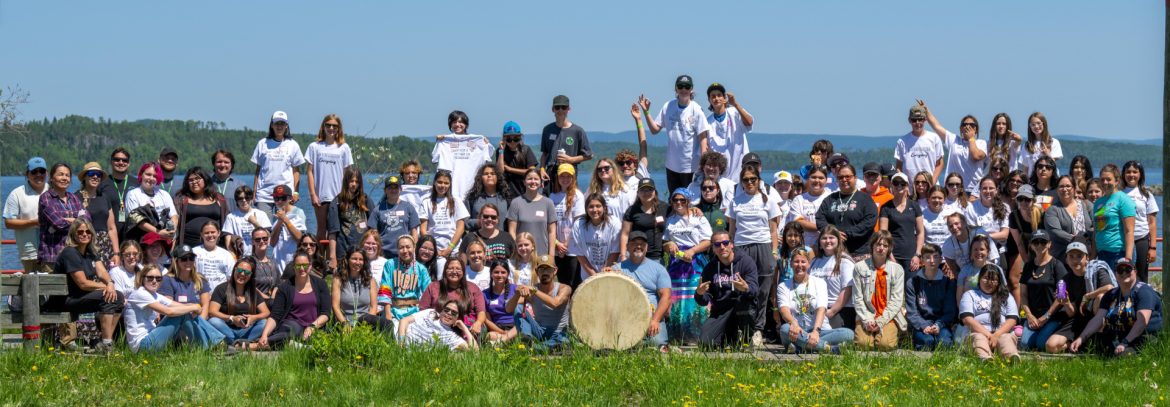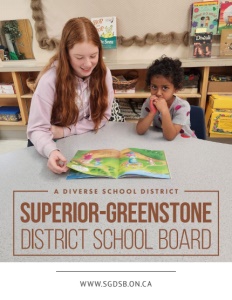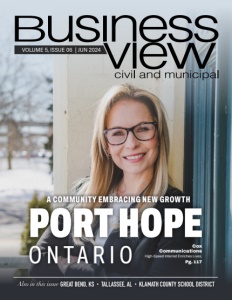Superior-Greenstone District School Board
A Diverse School District that is Cultivating Community and Nurturing Excellence
Blending innovative curriculum with a student-centered approach
In the beautiful and expansive landscape of Northwestern Ontario lies the Superior-Greenstone District School Board (SGDSB). Guided by the values of “Character, Citizenship, Collaboration, Communication, Creativity, Critical Thinking”, and the motto “Small Schools Make a Difference”, the board is committed to creating a positive learning environment where all students can succeed and be inspired to contribute to the world around them.
Spanning 45,000 kilometers, this diverse school board serves 1,350 students, in the communities of Beardmore, Geraldton, Longlac, Nakina, Caramat, Dorion, Nipigon, Red Rock, Schreiber, Terrace Bay, Marathon, and Manitouwadge. Alex Marton, Superintendent of Business, expands, “We have the largest English public board by geography in the province. We have 13 First Nations communities that we serve. We have 15 schools, and 18 buildings, across our mass geography, and driving from one end of the district to another can take about six hours. It is quite vast, and yet our student population is small but mighty in comparison.”
“We do consider our geography one of the defining factors of who we are as a school board,” continues Nicole Morden Cormier, Director of Education. “We have worked diligently over the last number of years to embrace our uniqueness, and to ensure that all of our stakeholders understand the incredible possibilities that are out there because we are small and because we have such a tremendous geography. It does cause us challenges, there’s no question, but we are now embracing the possibilities of the small size and the uniqueness of our school district in terms of our presence in our communities.”
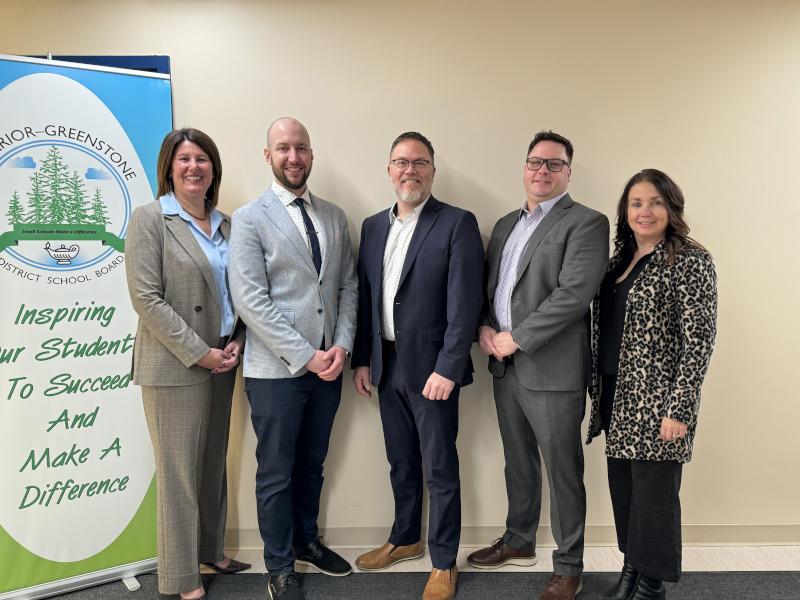
Empowering Student Voices and Fostering Opportunities
The first goal of SGDSB is to ensure that students are equipped for the future. “Core to our school board is graduating citizens who have a significant skill set in literacy, numeracy, critical thinking, and those big C’s -Collaboration, Cooperation, all of those core skills that our students need to be successful,” says Morden Cormier. These efforts begin with the youngest learners, who are taught to embrace literacy, in and outside of the classroom. “We learn to read for joy and pleasure, but we also learn to read to garner meaning from the information. And we don’t just read print, we read body language, we read the environment,” she maintains. “So, students have meaningful literacy experiences, where they perhaps have gone out and had an experience on the land and then come back to learn about it, to understand it more deeply, to read, to speak about it.”
The board is also taking steps to enhance the learning experience for all, by adapting to a student-centric approach. Through initiatives like the Student Senate, Indigenous Youth Council, and a Community Committee, students are given opportunities to collaborate and represent their peers. Morden Cormier elaborates, “The Student Senate is very much on leadership, and the Indigenous Youth Council is around Indigenous leadership. The community committee is around Equity and Human Rights leadership. So, we have students in the small schools that have a voice, not only in their school but board-wide.”
On the classroom side, students actively participate, organizing events like an annual Powwow and learning the skills required for an “Outers Trip” where they live on the land for several days. “I’ve seen up to 800 people attending this Powwow. They design it, they are on teams from the ground up. The educator is just a facilitator, asking them questions,” she relays. “These students are the leaders of the work that is happening in that classroom. And it culminates in the opportunity to put everything they’ve learned into practice.”
Celebrating and Supporting Diversity
Equity and inclusion are top of mind for SGDSB as it works to attract native language instructors and address teacher shortages. Marton recounts, “Through our equitable hiring policy, we are prioritizing lived experience, as opposed to the formal colonial experiences that would traditionally be found on a resume. That is one of the ways that we’re looking towards equity of outcomes, and making sure that our staff is representative of the communities that we’re serving.”
In another effort to support inclusivity, gender-neutral washrooms have been added to all schools. “That is a piece that is student-driven, and that student’s voice has been heard loud and clear. We’re culminating this year in making sure that that commitment is made whole, and that students across our district have options that align with their gender,” he reports. By prioritizing diverse perspectives and experiences, SGDSB is working to instill a sense of belonging where every student can feel safe, and thrive academically, socially, and emotionally.
Innovative Learning Environments
Covering such a large geographic area, virtual and e-learning classes are a significant part of SGDSB’s educational approach. “If you look at five small high schools, and the courses that they have available, they are fairly limited. They tend to be more of the core courses that students need to graduate. But we know that that doesn’t bring students to school, we know that that doesn’t help them to be exposed to all of the different possibilities in this very complex and ever-changing world,” Morden Cormier admits. These classes offer access to a wider range of subjects and multiple high schools to participate in shared courses.
Another feature unique to the district, all of SGDSB’s elementary schools have virtual playgrounds, allowing kids to be active, even when they can’t go outside. “We live in a region of Canada, Ontario with a lot of snow and a lot of cold weather,” describes Marton. “’ Kids can interact with this playground, they can throw balls at the wall, and the screen reacts to what they’re doing. It’s a great way to substitute that play that they get outside when the weather is prohibitive.”
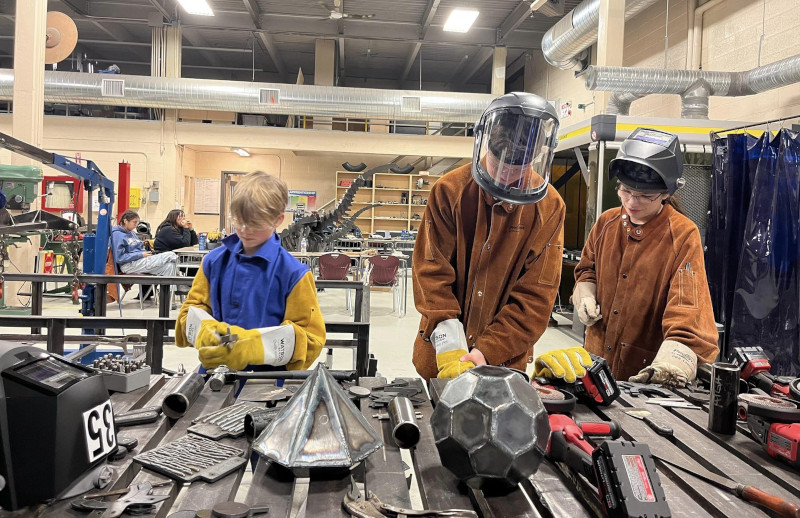
Partnership and Collaboration
Collaborations with local industries and institutions, such as the Canadian Welding Bureau, Confederation College, and Lakehead University, open doors to top-notch specialized training, dual credit, and co-op options, ensuring that secondary students have access to a wide array of career opportunities and academic pursuits. “Talking about the Canadian Welding Bureau, our shop classes are world-class. So much so that private industry partners work with us to train their employees in our shops after hours or over the summer period,” boasts Marton. “They are coming to us because our equipment is the best. Industry hires our students directly out of high school and sometimes before they’ve graduated as well, through our co-op programs.”
Community partnerships are also prioritized, exemplified by a collaboration between the municipalities of Schreiber and Terrace Bay who worked with the local high school to build garden boxes for a community garden project. In Manitouwadge an educator initiated a partnership with the local First Nations and the Ministry of Natural Resources to bring a micro fish hatchery into the high school, creating a unique learning experience. “These are again, opportunities that these children have let us know about, but also opportunities where our educators have seen potential and have taken advantage because they know our students so very well,” acknowledges Morden Cormier.
She underscores the integral role of SGDSB facilities, describing, “We are not just buildings. We are community centers.” From early childhood support to partnerships with various organizations, schools in the Superior-Greenstone District prioritize community involvement and collaboration. In addition, some facilities are shared between the public, Catholic, and French school boards, further promoting the spirit of collaboration in the community. “The beauty is, for example, they have physical education together because there are not enough students without it to have a good game of volleyball,” says Morden Cormier. “They come together, and they make sure that it’s all about the children. It warms my heart because we are not about politics. We are about the children.”
Partnerships with the municipalities, and agencies such as EarlyON programs, Thunder Bay District Health Unit, Contact North, and Anishinaabemowin Boodawe, an Indigenous language revitalization committee, showcases the district’s commitment to holistic community development. Morden Cormier underscores the significance of the collaboration between Superior-Greenstone and the First Nations, noting, “No longer are we the provider of education to First Nations in exchange for money for tuition. We are now partners in terms of ensuring that the approximately 50% of our students who identify as Indigenous are receiving the programs and services that they need in a timely way, and according to the desires of the First Nation communities where those children come from.”
Looking Towards the Future
As the Superior-Greenstone District School Board continues to evolve, it remains rooted in its mission to graduate learners who are prepared with the skills essential for success. As for the focus in the coming year, Morden Cormier asserts, “It’s making sure that every student can read at grade level, wants to come to school, and feels a sense of belonging in our buildings.” Through innovative programs, strategic partnerships, and a forward-thinking approach, SGDSB is nurturing student potential and embracing the richness of its communities.
AT A GLANCE
Superior-Greenstone District School Board
What: A public school district committed to meeting the needs of all learners while sparking curiosity and joy in learning.
Where: Administrative offices are based in Marathon, Ontario, Canada serving a school district spanning 45,000 km.
Website: www.sgdsb.on.ca
